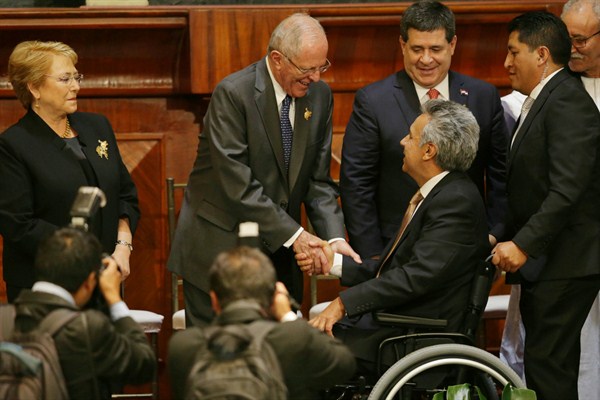Ecuador’s new president, Lenin Moreno, has helped blunt escalating tensions along his country’s border with Peru, holding in place a two-decade peace accord that has brought benefits to both sides. Plans to build a wall along the border have been halted, and strains appear to have been eased. In an email interview, Ambassador Marcel Fortuna Biato, a career Brazilian diplomat who was a principal adviser to the senior Brazilian negotiator during the Peru-Ecuador peace process from 1995 to 1998, explains the roots of the conflict dating back to the 19th century, how active measures to bring law and order to the border region almost resulted in fresh conflict, and how a peace that has benefited both countries ultimately prevailed.
WPR: What are the origins of the territorial dispute between Peru and Ecuador, and how does it fit in with the broader bilateral relationship?
Marcel Biato: The border dispute goes back to the early 19th century, when both countries broke away from the Spanish Crown. Imprecise knowledge of and control over these vast and still largely unexplored tracts of land meant territorial claims were necessarily vague, imprecise and conflicting. The wrangle between the newly-minted republics came to a head later in the century when the rubber boom led Peruvian explorers to push into the disputed areas. Over the next decades, a series of border skirmishes, followed by brief cease-fires and flurries of diplomatic overtures, failed to decide the issue. The enormous differential in demographic, economic and military strength between the two neighbors fed mutual distrust. It also encouraged an underdog mentality in Ecuador, always keen to check what it saw as an overbearing Peru, itself a throwback to the colonial period when the Viceroyalty of Peru exercised, for a time, suzerainty over Ecuador.

